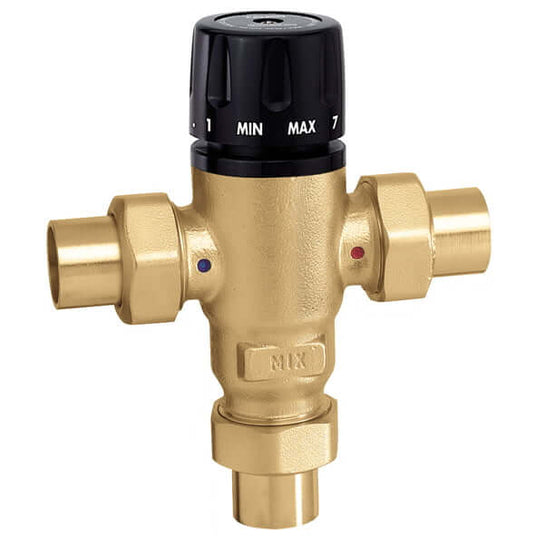THERMOSTATIC MIXING VALVES FOR RADIANT FLOOR SYSTEM
If a building uses more than one heat distribution method (PEX pipe, hydronic radiator, etc.), do I need to install two separate systems?

When you have a building where you use two types of hydronic heating that require different liquid temperatures, you don't necessarily need
two different heating systems. You can simply add a thermostatic mixing valve.
For example, if you have radiators on the upper floor and radiant floor heating in the concrete basement, the liquid temperature needs to be much lower in the concrete than in radiators. The boiler (vol: 5,400) in the system will be programmed for the highest temperature, which is needed for the radiators in this example. Then, by adding a thermostatic mixing valve, it will be possible to adjust the temperature of the liquid to a lower level before it enters the concrete.
How does a thermostatic mixing valve work? A.K.A., mixing valve, thermostat valve, or mixer valve?

The thermostatic mixing valve is used to reduce the temperature of the glycol mixed liquid before it
enters an appliance.
It has a T-shaped design, with the hot glycol mixed liquid coming from the boiler on one side, and the return liquid on the other side. In the center part, a circulating pump draws the liquid from the thermostatic mixing valve and sends it to the heating appliance that requires a lower temperature.
The output of this valve is a mixture of the hot liquid and the return liquid, ensuring that it is tempered to the correct temperature.
